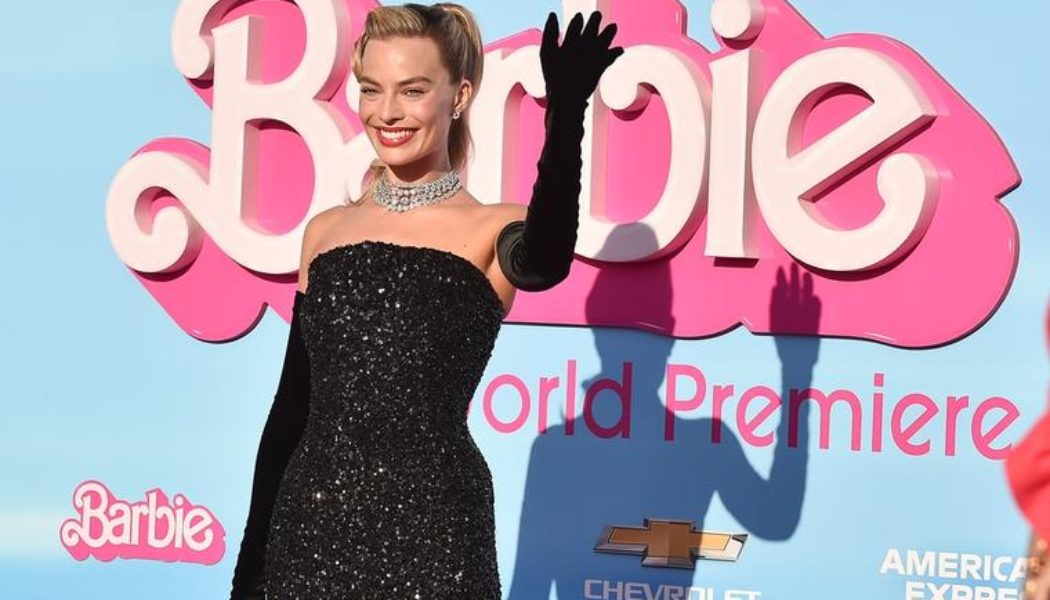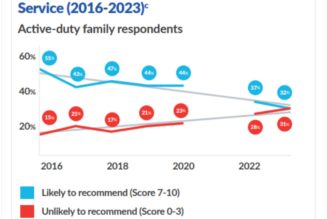
This summer, swathes of pink-clad women flooded into movie theaters to attend the much-anticipated premiere of Barbie, director Greta Gerwig’s blockbuster debut.
Until now, indie films were Gerwig’s bread and butter. Her projects largely center on female protagonists and pursue themes related to femininity: examining female friendship, women as artists, and the progression from girlhood to womanhood. Both Ladybird (2017) and Little Women (2019) performed and reviewed well, but neither came close to the sweeping success of this most recent project.
According to Deadline, Barbie raked in $162 million just in its opening weekend — about twice as much as Christopher Nolan’s Oppenheimer, with which it shared a release date of July 21. It’s the first woman-directed film to gross a billion dollars at the box office, so it’s little surprise media attention has fallen on it so heavily in the days since. Many conservative, Catholic reactions have been negative, often responding from a place of exhaustion with a media frequently peddling thematic messaging unappealing to a traditionally religious audience. It forms an understandable lack of trust between viewer and director — but Greta Gerwig is the exception, not the rule.
Her films speak truthfully on the nature of a distinctly feminine heart, and Barbie fits well into her body of work. Its focus on mother-daughter relationship, friendship and family as a primary, enduring motivation, and concluding rejection of a world without suffering should be enough to encourage Catholic audiences to purchase tickets. But its artistic address to young women packs its most thoughtful and poignant punch.
The film opens on its protagonist, Barbie (Margot Robbie), living a perfect life in her perfect world. Multiples of Barbie and Ken populate the artfully, highly satirized Barbieland. The detail-oriented design of the film sought to recreate the real-life experience of playing with Barbie dolls as a child, down to the shades of pink and how Barbie floats from the second floor to the first rather than taking the stairs.
Barbie’s great affection for Barbieland comes largely from its constancy: There is no change, no sadness. The dolls’ cheerfulness isn’t insincere, but there are no negative emotions or experiences for it to compete with either. Barbie has a childlike confidence in herself and her understanding of the world that has yet to be tested.
Her first sign of divergency comes mid-bespoke song-and-dance routine. “Do you guys ever think about dying?” she asks, still smiling ear to ear.
They haven’t. They can’t even answer her question. But Barbie’s new awareness haunts her the next day, as she burns toast, falls from her roof rather than flying, and – most horrifically — loses her perfectly arched foot. “I would never wear heels if my feet were like this,” she grumbles about her newly humanized gait.
As she continues to malfunction, Barbie loses the imaginative confidence that trademarks every doll in Barbieland. The dolls are kind, gentle and entirely self-assured. When they accept awards, they acknowledge that they deserve them. When Barbie’s feet fall flat, and she spots the first formation of cellulite on her thigh, she experiences embarrassment for the first time in her life. She doesn’t know how to describe the growing, gnawing lack of control she feels as her relationship with her body and the world around her fractures.
The worry that grips her draws its strength from the film-defining quandary of identity. Barbie wonders what power her emotions have over her and whether her newfound heartbrokenness poisons her very self. “Barbie doesn’t get embarrassed,” a doll reminds her when she confesses her insecurity. Regardless of her resistance to change, our protagonist now balances precariously between who she was supposed to be — Stereotypical Barbie — and terrifying uncertainty in who she is now. It’s a profoundly human, distinctly teenage girl phenomenon.
Despite her despair at showing signs of humanity, Barbie’s first interaction with a woman in reality is perhaps the film’s most touching scene. Seated on a bench, she makes eye contact with an elderly woman at the opposite end. They just look at each other for a moment before Barbie, quietly awed, says with absolute sincerity, “You’re so beautiful.”
“I know it,” the woman replies, her furrowing brow showing her own honesty.
They laugh together. That moment is all joy. So it stings when Barbie forgets what she saw in that woman, a person showing all the signs of aging she had been so afraid of, and turns a crueler eye onto herself.
Barbie’s affirmation to the other woman wasn’t cloying or cliché. She didn’t say it to be nice, because Barbies don’t need cheap compliments to convince them of their loveliness. They know it because they know who they are. Barbie’s crisis of identity throws that into disarray. Within 45 minutes of admiring the beauty and dignity of the woman in front of her, she’ll weep over how little of the same she finds within herself.
Our designated angst-riddled teenager Sasha (Ariana Greenblatt) will say it for us. “What’s her ending?”
Quickly, decisively, it’s clear that it won’t be a romance with Ken (Ryan Gosling) that sends Barbie contentedly off into the sunset. “She’s not in love with Ken!” Sasha snaps at the Mattel CEO (Will Ferrell), who is eager to suggest that conclusion. She’s sharp and defensive in her reply. But Barbie answers gently. “I’m not in love with Ken,” she echoes simply, shaking her head.
It’s not an attack against Ken or an invalidation of romantic love. It’s just the truth. The end of her story won’t be romance with a man, just like the preteen and teenage girls watching in the audience. The adolescent chapters of their lives likely won’t end with riding off into the sunset with a husband. Much more often than not — and for the better — they will first learn to love through the profundity of female friendship. Gloria (America Ferrera), the human forming Barbie’s experience of the world, remarks how she never owned a Ken doll. As all children do, little girls get to know themselves through the artistic expression of play, and so, as they ought to be, Barbie(s) and her friends are center stage.
Ruth (Rhea Perlman), Barbie’s creator (both in life and art, having named the doll after her daughter), leads Barbie away from the overcrowded finale into a softly lit, empty space. They engage in one-on-one conversation. Alone, with her creator, Barbie asks the questions that she has been slowly and painfully piecing together. It looks a lot like prayer.
“So being human’s not something I need to — ask for? Or even want? It’s something that I just discover I am?” she says, slowly, her voice thick with weariness and relief.
It’s such a childlike question, really — a return to girlhood. Barbie learns that she is not at war with the sadness or joy or fury or grief welling up in her heart every day. She doesn’t have to resist the rise and fall of an emotional sea breaking in her chest. Her feelings change nothing about her identity. She holds final sway over them, and they must yield to her acceptance or refusal. And still, Ruth reminds her that each emotion is an essential piece of the human experience. “Now, feel,” Ruth tells her, leading into the final montage of the movie, centered on joy.
“Yes,” Barbie whispers, in a quiet acceptance of all her newfound humanity entails.
For a teenage girl, life often involves significant emotional turmoil. Young women question themselves, how others perceive them, and it’s no easy feat to realize that every other girl in the room is doing the same. Lack of confidence often begins with distrust of the self, especially during a time when your own feelings and perception of the world seem pitted against you. Suddenly, everyone — including yourself — is all too eager to highlight how you’re falling short.
In an acknowledgement of this experience, Barbie continually turns back to peer within the self. The director’s goal was not to show a Barbie-fied version of tired deliberations on female vocation. Gerwig doesn’t concern herself with telling her female audience what to do. The film’s final, gentle message rather encourages them to discover who they are. Barbie extends a peaceful hand in a cultural frenzy of messaging pulling at the loose threads in adolescent women’s hearts. Because of that, it’s well worth taking your daughter to see it.
VIEWER CAVEAT
Barbie has a PG-13 rating, for suggestive references and brief language.









